Load-bearing masonry isn’t exactly novel—stereotomic construction spans continents, cultures, and epochs. Despite stone’s ubiquity—throughout history and as a resource—steel and reinforced concrete have supplanted it as go-to structural systems, largely relegating the natural material to the task of facade cladding. That shift has had severe environmental implications—the production of steel and concrete produce over 15 percent of global carbon dioxide emissions annually.
Stone comes in myriad types; some, more brittle, such as slate, are appropriate for roofing and siding; others with a sturdier composition, like sandstone, granite, limestone, and marble, have load-bearing applications. But they all have one principal structural limitation in common: poor tensile strength. Popular consensus claims that stone is prohibitively expensive and, on top of that, there is a dearth of skilled labor with experience working with the age-old material at a meaningful scale. However, with the help of contemporary construction techniques, a swelling movement seeks to take advantage of masonry’s compressive capabilities and sustainability credentials.
For Pierre Bidaud, the creative director of The Stonemasonry Company, a London-based designer and stone fabricator, the AEC industry is simply looking at the material the wrong way. The industry does not have to reinvent itself, he says, but can relearn the language of the medium with lessons gleaned from prefabricated steel, concrete, and, in recent years, mass timber. “Stone is, in fact, a natural concrete,” Bidaud says. “We aim to elevate stone to its full potential as a structural material, which has always been used as a sort of compressive architecture.” The Stonemasonry Company is achieving those ends by routing post-tensioning cables through blocks of stone to create cohesive units that are suitable for both shear and compressive loads, and can be easily assembled, like precast concrete planks and beams.
Concrete, poured in place or precast, is versatile and often cost-effective, especially when compared to stone—or so conventional thinking goes. According to Steve Webb, director of London-based Webb Yates Engineers and frequent collaborator with The Stonemasonry Company, the perception of exorbitant cost associated with stone construction is because it is used primarily for cladding. “Huge amounts of what is quarried—around 80 percent—never reaches the market due to unpopular color or visual flaws, though it remains structurally viable,” Webb explains. Those offcuts come cheap, at around the same cost as the cement and aggregate used for precast concrete, and without the need for formwork.
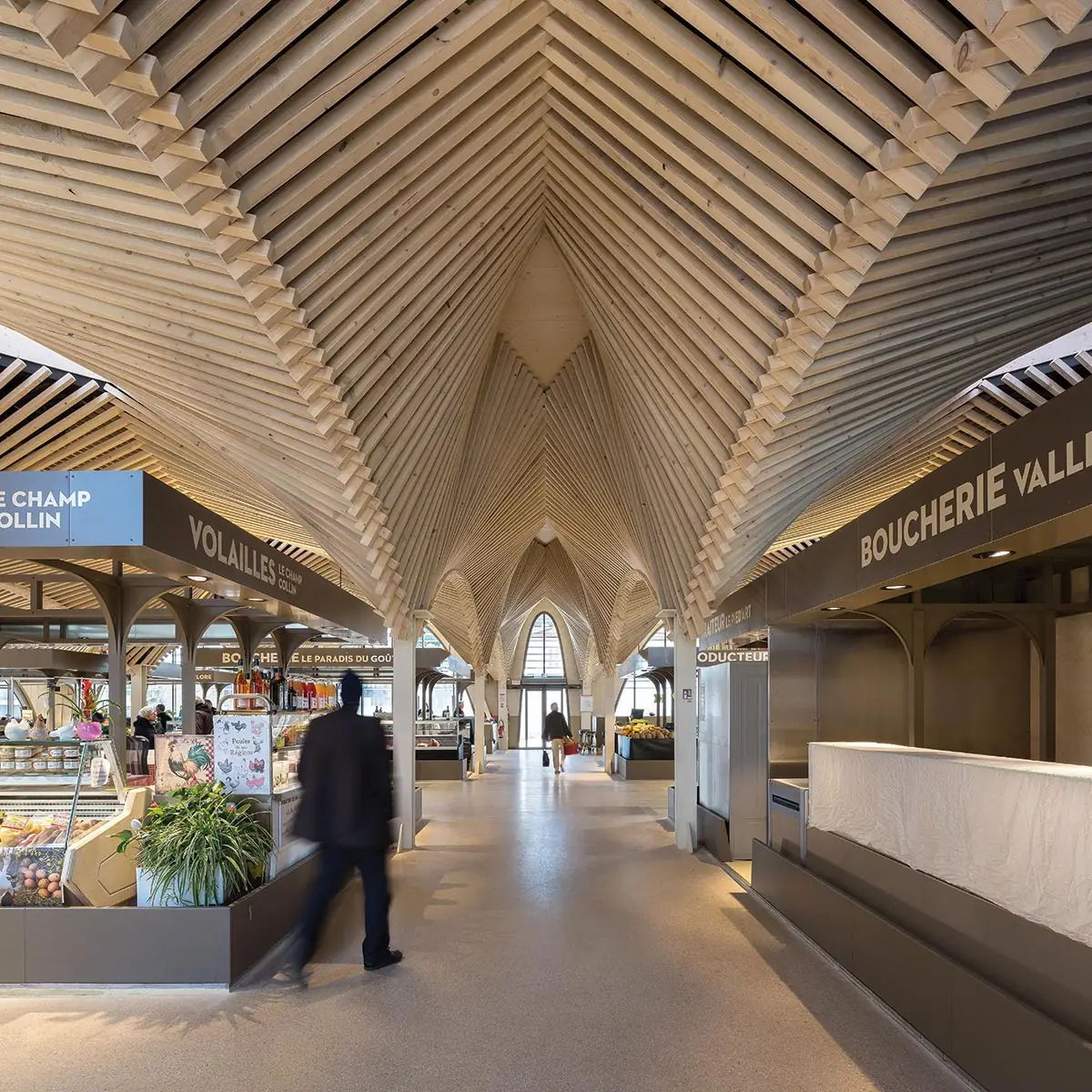
The market hall uses locally sourced stone and timber (above and top of page). Photo © Olivier Mathiotte
The Stonemasonry Company and Webb Yates Engineers are not alone in the endeavor to use such material structurally. A growing cadre of architects concentrated in France—with abundant stone quarries and trade schools—are putting these ideas into practice. Studiolada, founded some 15 years ago in Nancy, in the northeast corner of the country, is one such firm. The office builds, sources materials, and hires labor within a two-hour radius of the regional capital. This commitment to hyper-localism primed the practice for an expertise in traditional timber framing that has, in more recent years, expanded to include masonry construction. Studiolada’s recently completed market hall in Saint Dizier demonstrates those skills: load-bearing stone rises from a concrete foundation to form catenary arches of three different widths, the widest being over 75 feet. The exterior masonry, with the help of slender internal steel columns, supports steel trusses above, which allow for long spans and undulating timber vaulting within.
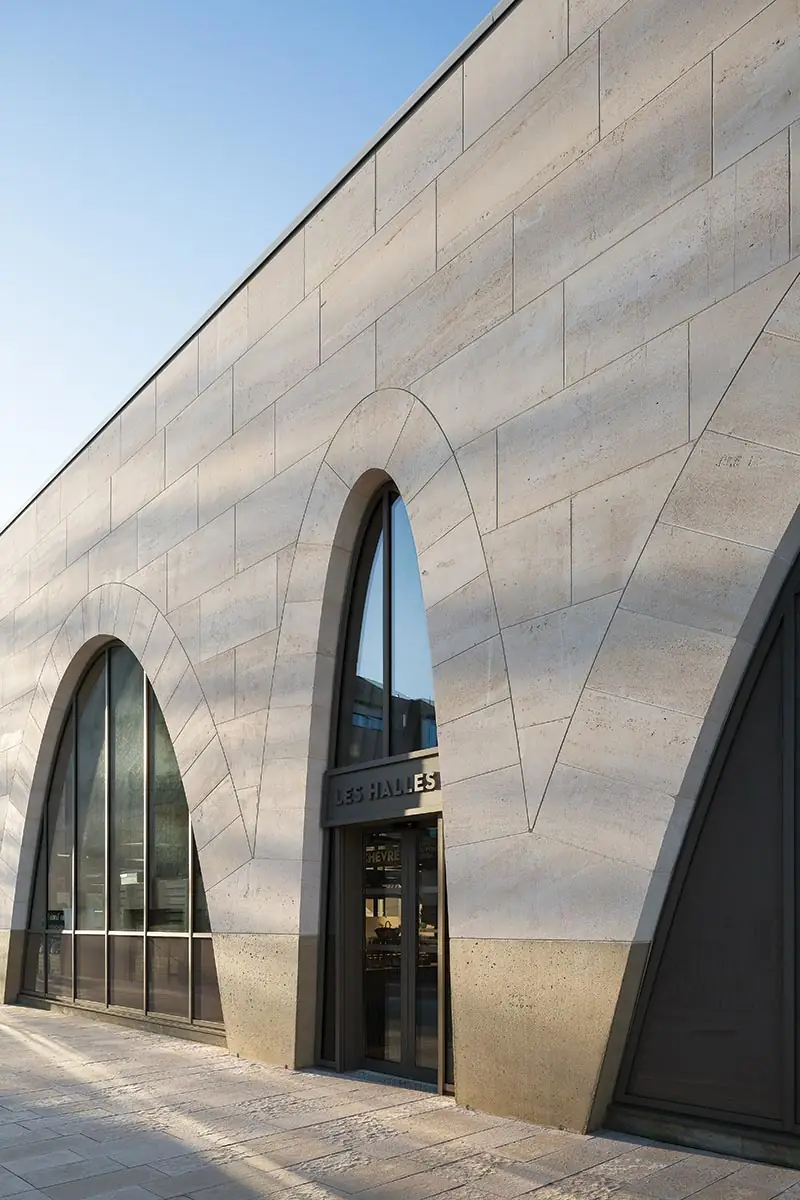
1
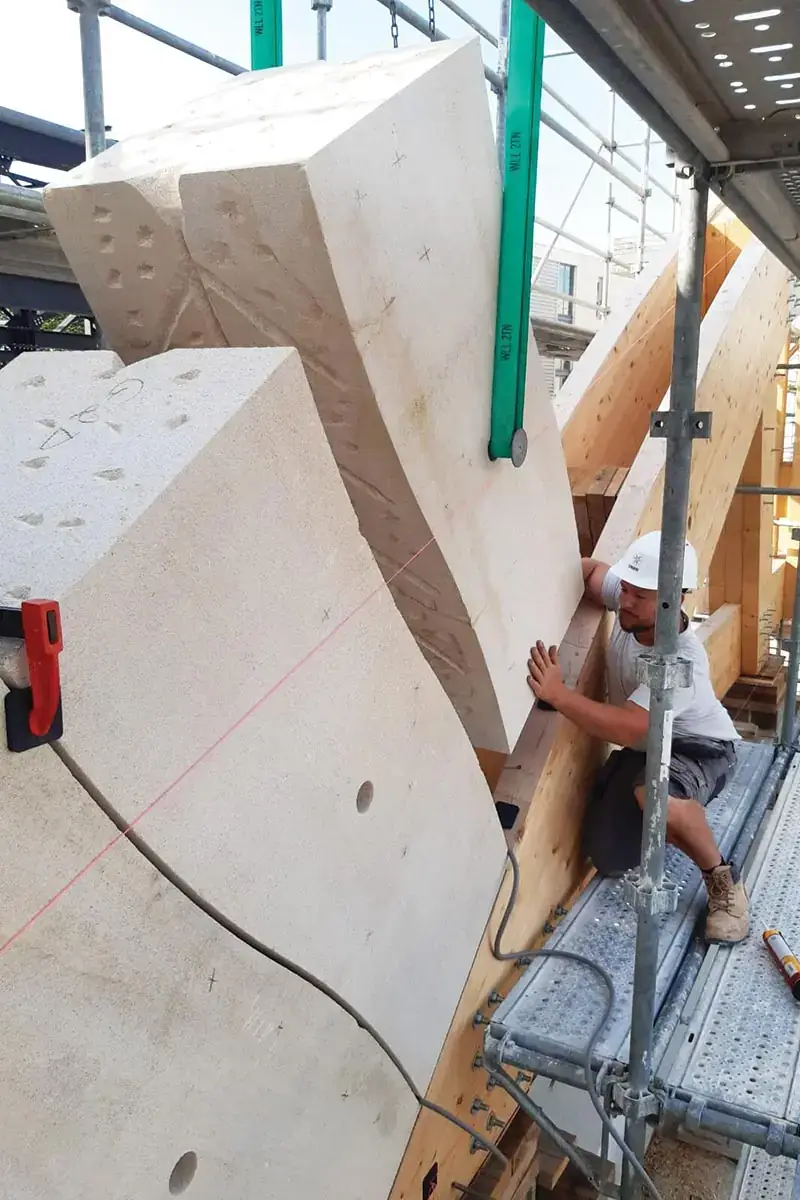
2
The arches are set in place with support frames (1 & 2). Photos © Olivier Mathiotte (1), SNBR (2)
Farther south, near Lyon, in the village of Soleymieu, onSITE architecture’s Marie and Keith Zawistowski are using stone as a resource for design-build, community-focused initiatives. The two met in 2001 as students at Auburn University’s Rural Studio and, equipped with the lessons from that socially conscious program, developed a similarly mission-driven initiative at Virginia Tech’s architecture school called design/buildLAB. When the duo decamped to France in 2015, they brought the program with them. There, in a 5,000-square-foot research and fabrication space adjacent to a regional hub of the Grands Ateliers (France’s national association to promote craftsmanship in many disciplines), the two collaborate with dozens of architecture students from nearby schools in Lyon and Grenoble to steadily roll out civic projects.
One example is a cafeteria for the École Jean Rostand, a primary school in the small city of Bourgoin-Jallieu. The L-shaped structure is built in a combination of rammed earth and locally sourced limestone in variegated yellows and grays, with a canopy of cross-laminated timber. Because this corner of France falls within a seismic zone, the cafeteria’s stone blocks were cored and fitted with rods of reinforced concrete that run down to the foundation. Students at the design/buildLAB have also been experimenting with different digital design techniques, including importing scans of load-bearing stones into 3D models and assembling them into complex geometric forms.
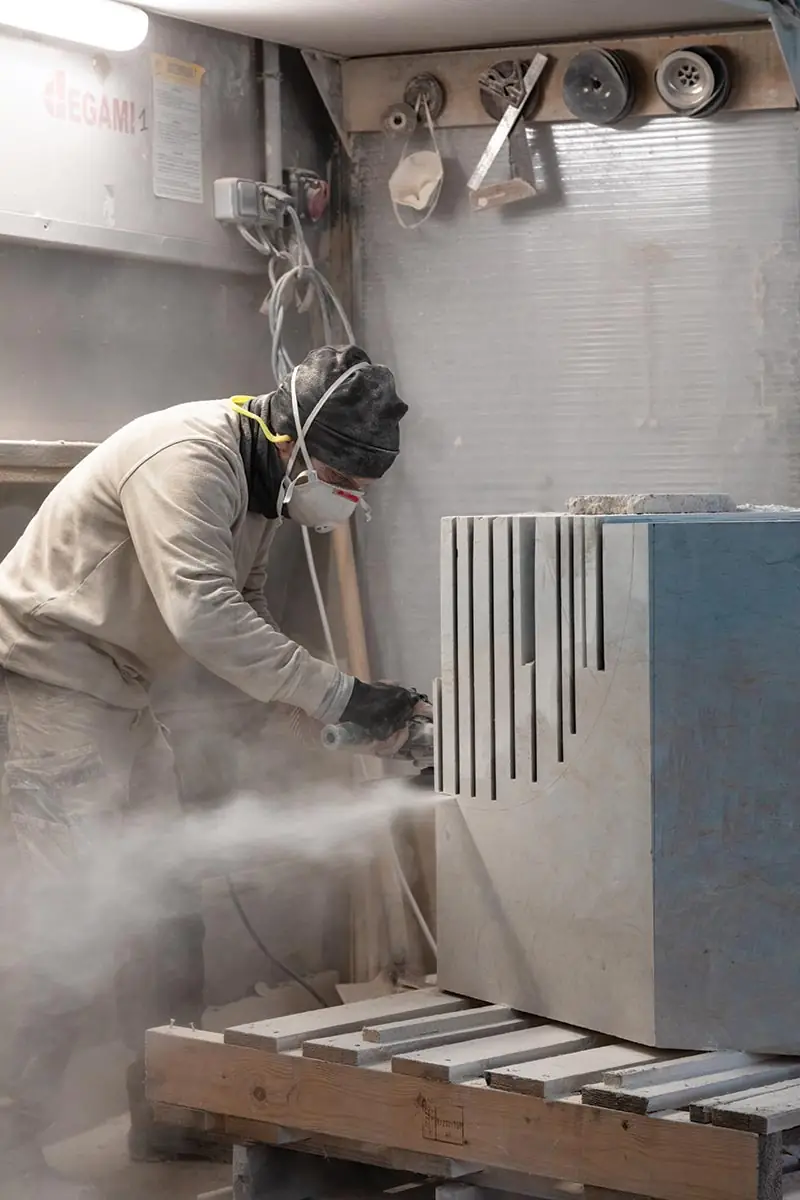
3
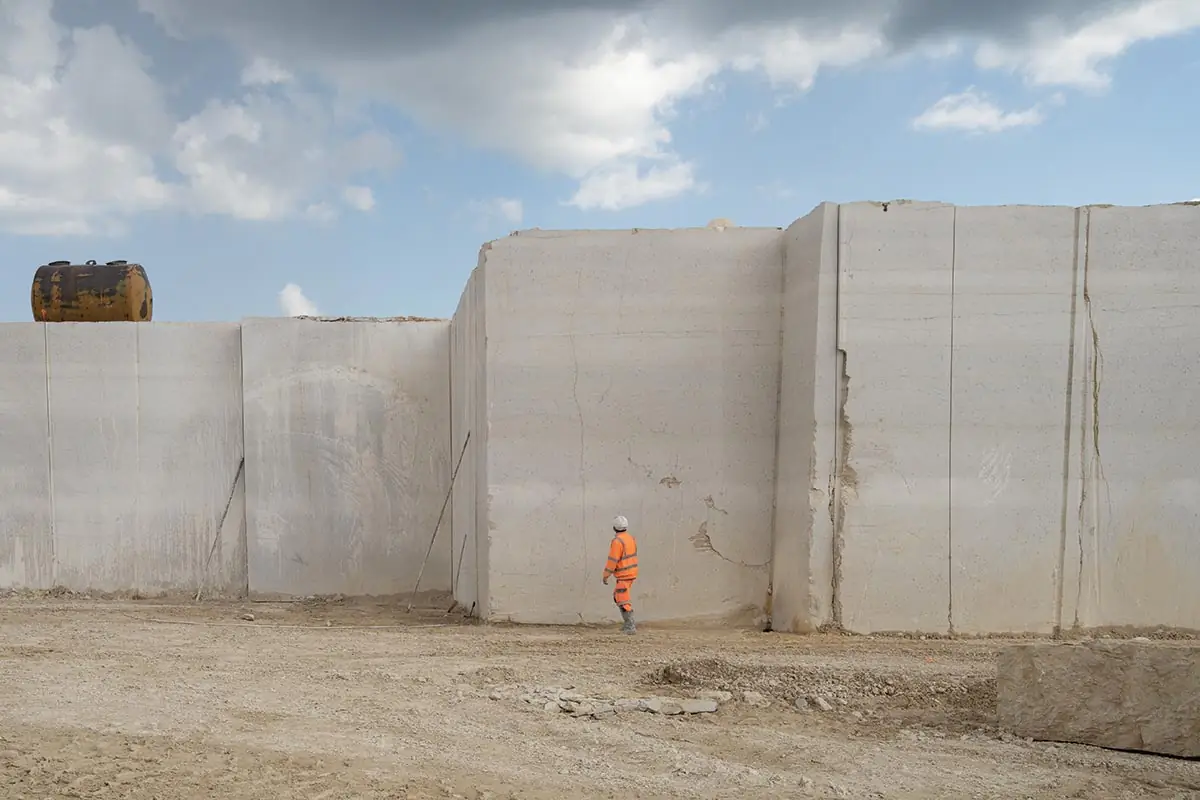
4
The cafeteria’s stone was quarried nearby (3 & 4). Photos © Lauriane Lespinasse (3), Francois Croisille (4)
The use of multicolored stone kept costs down (5). Photo © Maxime Verret
The roof is built of cross-laminated timber (6). Photo © Maxime Verret
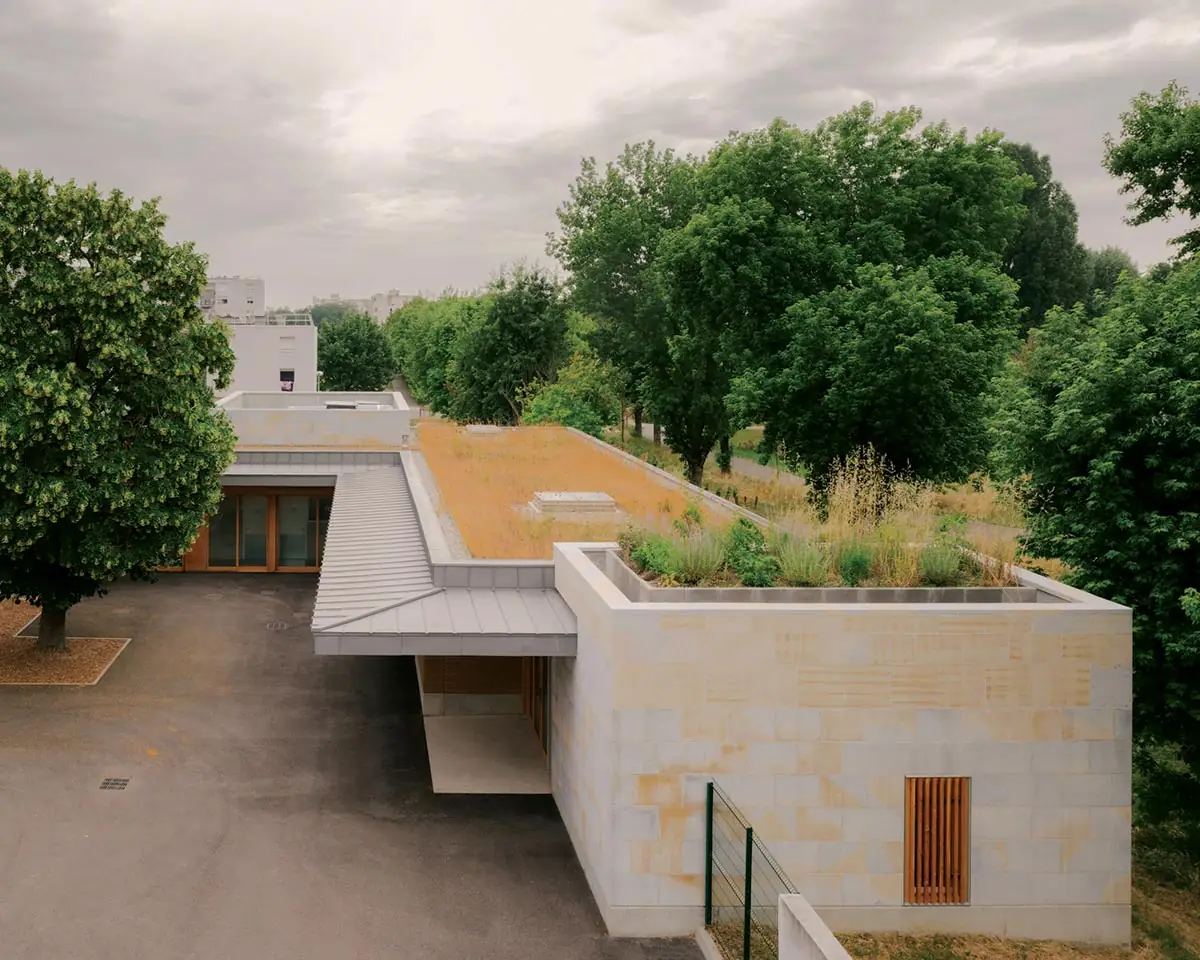
5
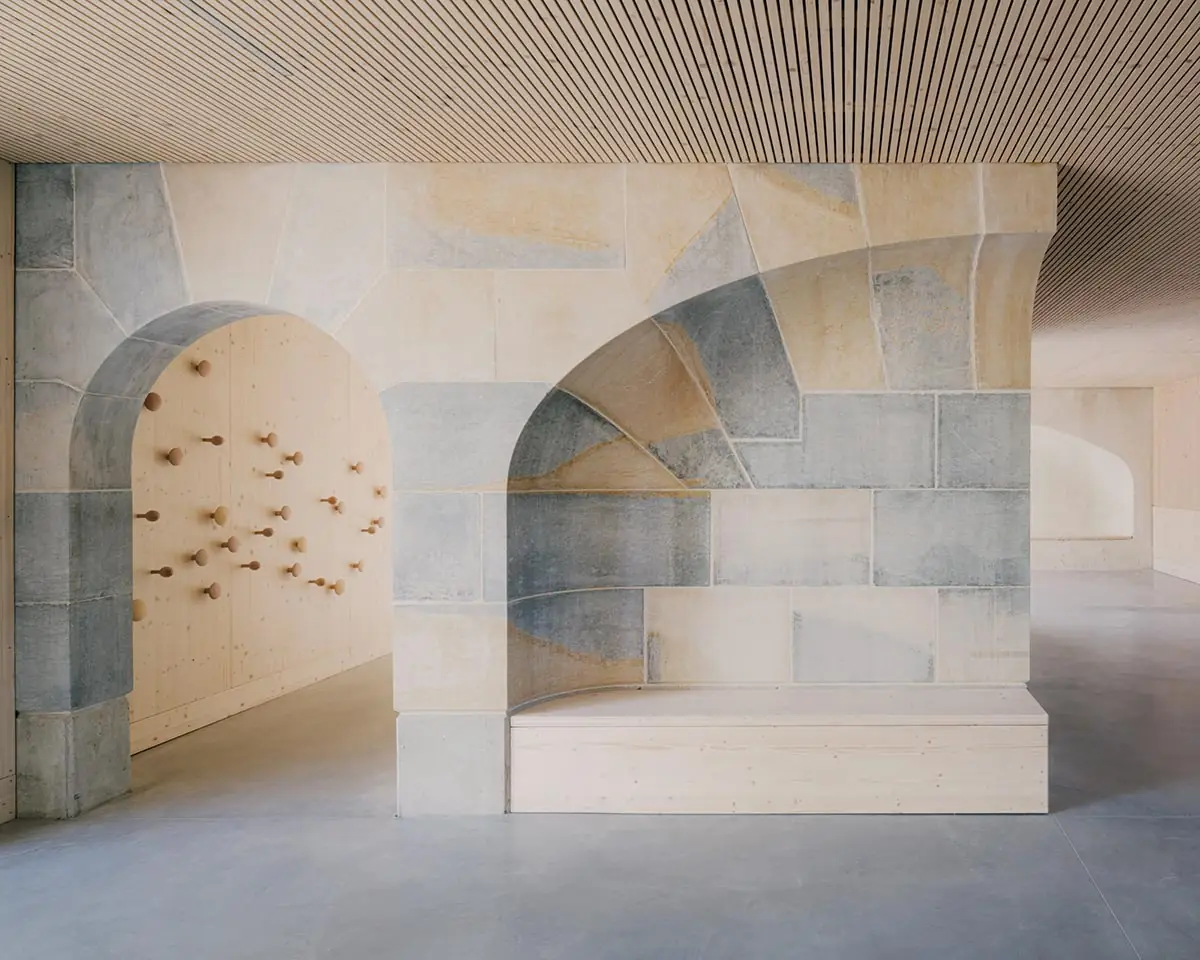
6
Paris-based Carl Fredrik Svenstedt Architect offers a glimpse of more utilitarian applications of structural stone. The firm has completed a spate of wineries and residences across France using the material, but is now exploring its use at a larger scale, to house Swedish startup Evroc’s network of data centers. The company pitches itself as a more sustainable cloud service, proposing data centers with proximity to sufficient renewable energy sources and deploying energy-efficient technologies. The use of load-bearing stone promises to reduce the embodied carbon of the structures.
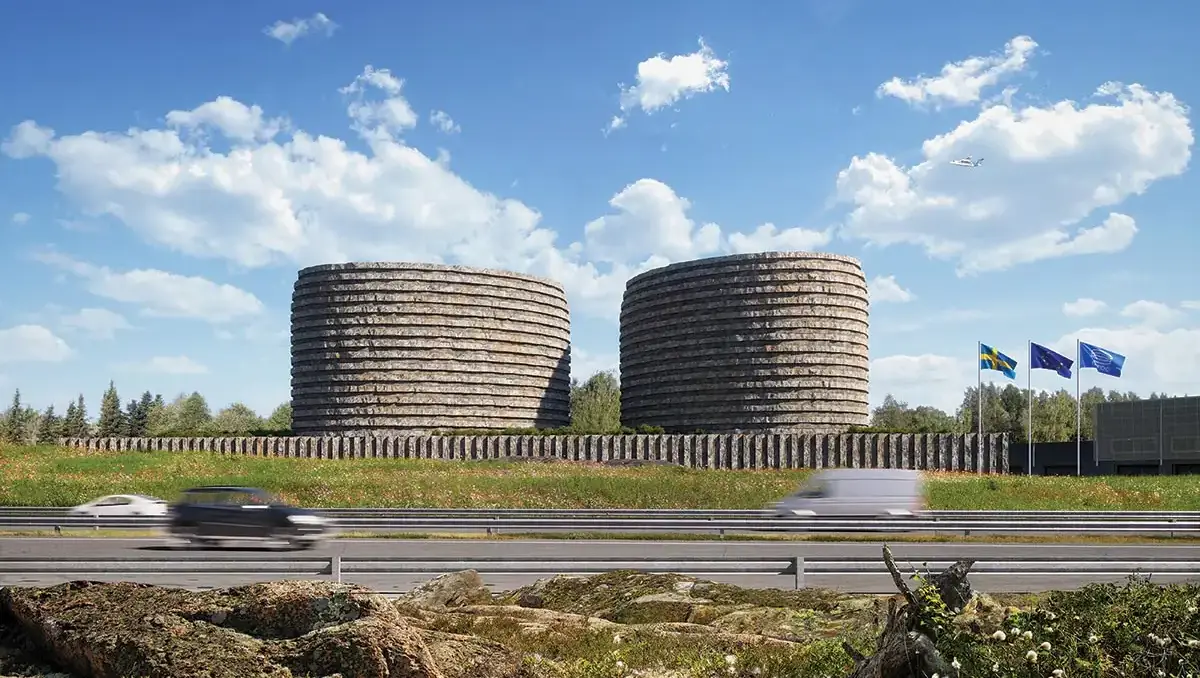
The data center proposed for Stockholm. Photo © Carl Fredrik Svenstedt Architect
“Instead of making a steel or concrete box on the side of the road, we are suggesting the use of granite blocks, which have up to five times the compressive strength of standard concrete,” says firm founder Carl Fredrik Svenstedt. To that end, the practice has filed for a building permit in Stockholm for the first data center—though, owing to the project’s novelty, the designers may have to opt for a hybrid structural system that also incorporates either concrete or steel.
Like mass timber in recent years, load-bearing masonry could go taller, or so Bidaud and Webb claim. Their traveling exhibition, The New Stone Age (curated in collaboration with London-based architect Amin Taha and last shown at ABC Stone’s Brooklyn warehouse and exhibition space in the spring of 2023), examines not only the history of the construction technique but also its capacity to support towers, among other possibilities. “You could build a hundred-story building with post-tensioned stone and support long spans with mass timber or prefabricated stone planks,” Webb muses, “all while reducing embodied carbon in construction, and in operations, owing to the material’s thermal mass.”
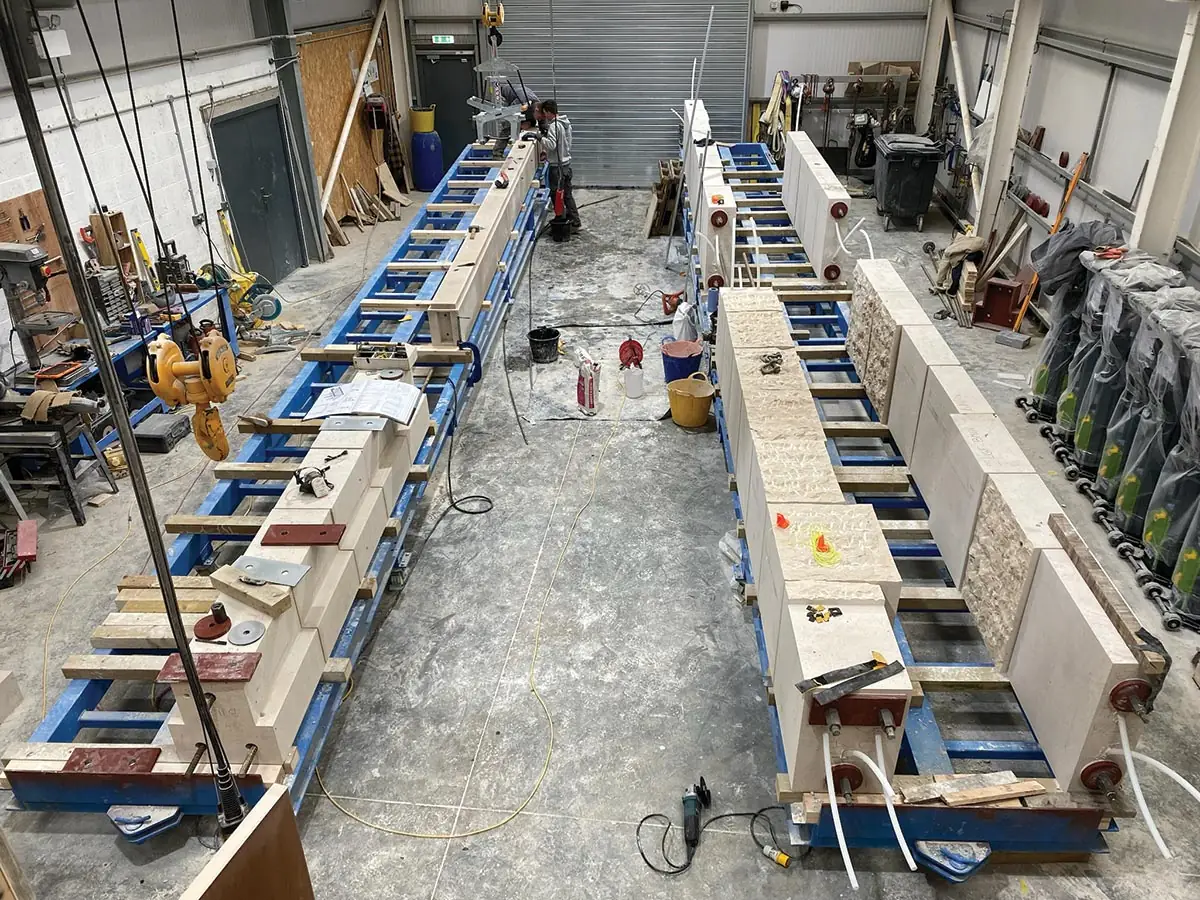
7
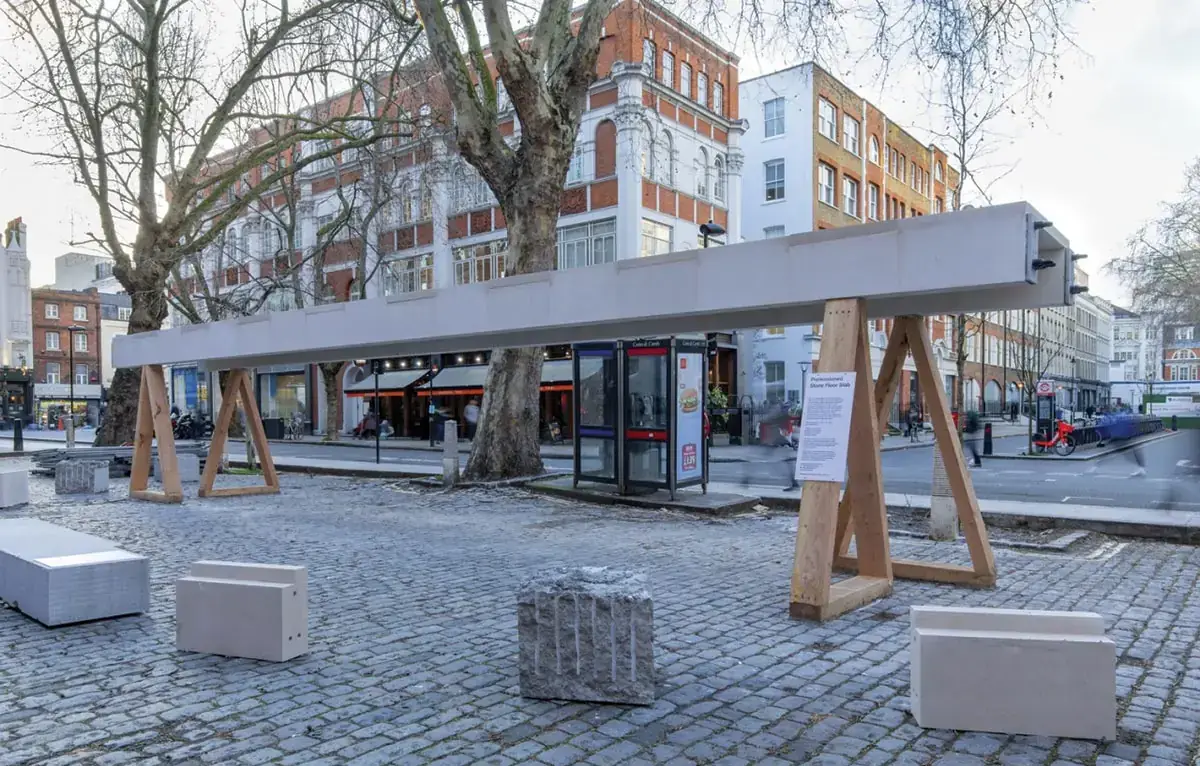
8
Bidaud’s team fabricating post-tensioned stone (7) and on display at The New Stone Age (8). Photos © Pierre Bidaud (7), Chris Jackson (8)
This new generation of load-bearing masonry still faces many hurdles before becoming commonplace. Stone, by its nature, is less uniform than concrete, steel, and cross-laminated timber or glulam, which makes it difficult to establish common industry standards that can inform building codes. But there is an expectation that growing demand will impel local governments and the masonry industry to develop a set of rules in the future. Contractors and developers lack familiarity with the material, and its use is met with a degree of skepticism, though its application as an easy-to-install prefabricated element could bridge that divide. The building industry may be in store for a tectonic shift in the years ahead.
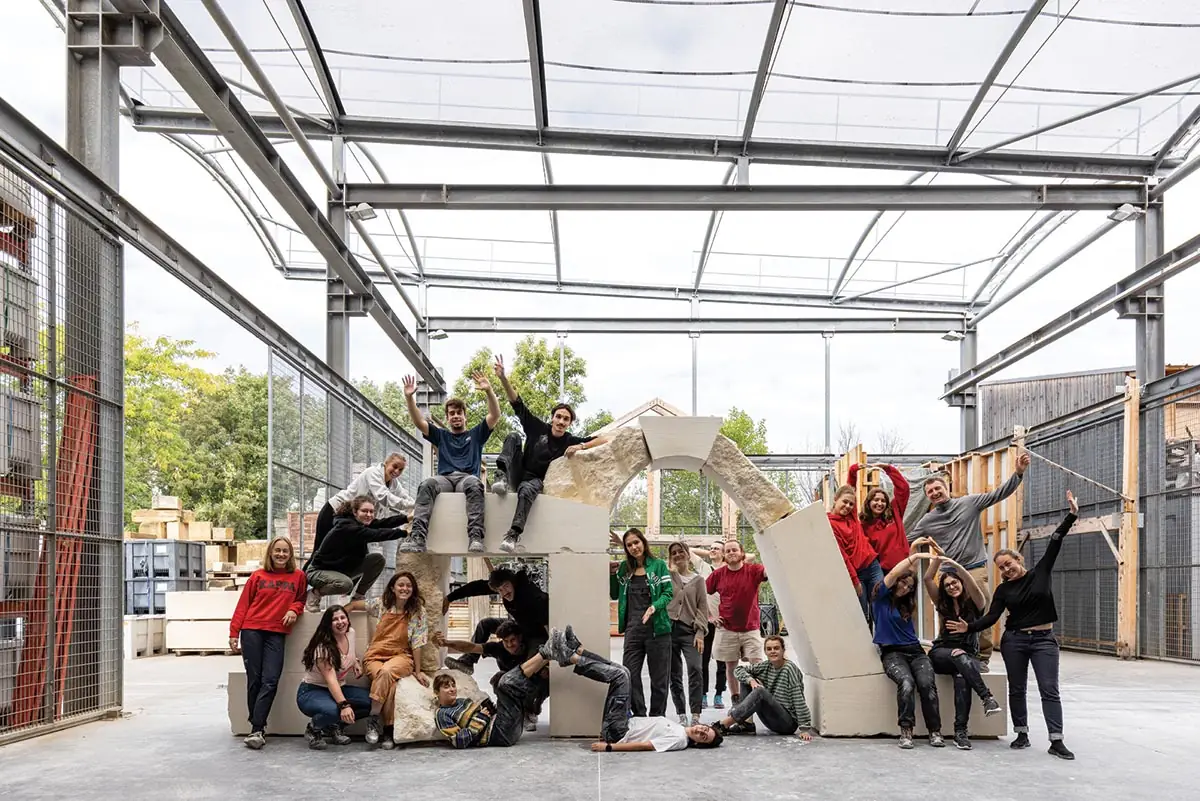
The Quarry Crust (Waste Stone) Arch project. Photo © Salem Mostefaoui
Join RECORD on April 17 at the Massachusetts Institute of Technology’s MIT Media Lab for Sustainability in Practice, a special half-day event with featured speakers including Carol Ross Barney, Mario Cucinella, Felix Heisel, and David Lake and Ted Flato.




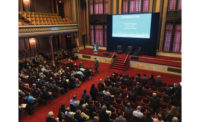

Post a comment to this article
Report Abusive Comment